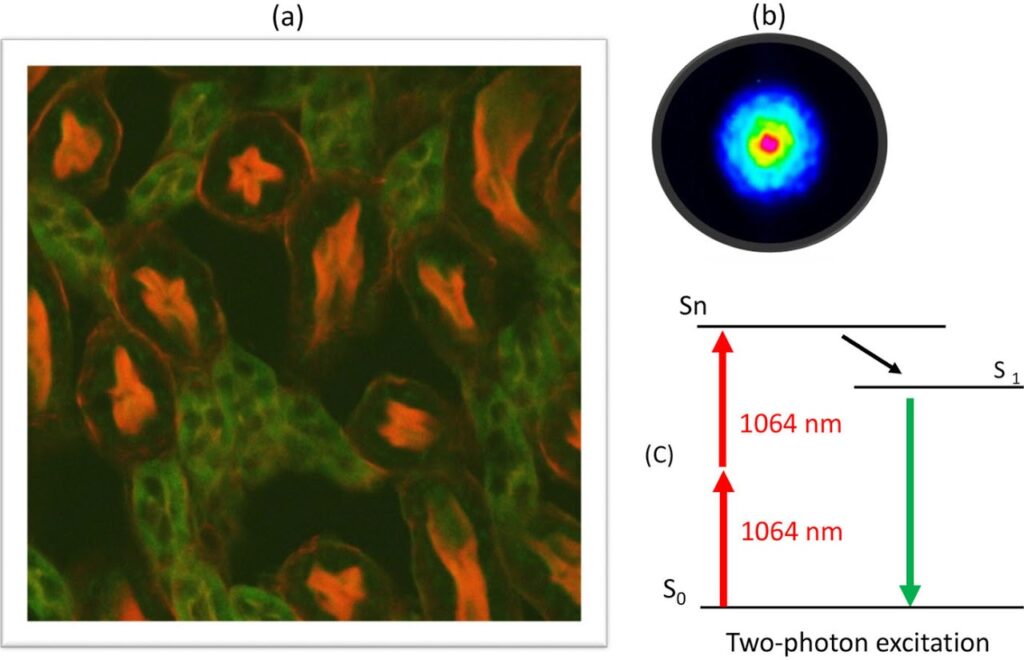Multimode nonlinear fiber optics, a spatiotemporal avenue
Nonlinear optical effects in multimode optical fibers (MMFs), such as the modal-phase matching of four-wave mixing (FWM) processes, have been known for a long time. However, the manipulation of the temporal and spectral properties of ultrashort pulses combined with the degrees of freedom provided by fiber multimodality is a research field that has only emerged in the past few years, as illustrated by the exponential growth of research interest. In our review, we provide our perspectives on recent studies involving nonlinear optical pulse propagation in multimode optical fibers.
Over the past 10 years, there has been a revival of interest in pulse propagation in multimode fibers, motivated by the exponential growth of traffic demand in optical networks on the one hand, and a transmission capacity increase associated with the spatial dimension, or spatial division multiplexing (SDM), on the other hand. One of the main current limitations to the transmission capacity of both single-mode and multimode fiber optical communication links is provided by fiber nonlinearity. Therefore, the study of nonlinear pulse propagation in MMFs and multicore fibers is of great practical relevance in the context of SDM.
However, our review paper [1] is devoted to discussing the perspectives of nonlinear optical MMFs beyond SDM communications. As a matter of fact, MMFs are being explored for different optical technologies, such as a means to scale up the power of fiber lasers and supercontinuum light sources, to perform high-resolution biomedical imaging, and to deliver powerful light beams for industrial processing. From a fundamental point of view, as illustrated by Fig.1, MMFs support a rich and complex mix of spatial and temporal nonlinear phenomena so that they may serve as a test bed for the study of complex physical systems.

In Sec. II of our review, we provide a brief overview of the different models available to efficiently compute spatiotemporal beam propagation in nonlinear MMFs. In Sec. III, we apply these models to discuss the intriguing phenomenon of multimode optical soliton (MMS) generation, where nonlinearity balances both chromatic dispersion and modal dispersion at the same time. Section IV is devoted, first, to a historical introduction of the early use of MMFs for extending the range of frequency conversion by nonlinear parametric wave mixing. Second, we describe the recent progress in nonlinear wave mixing research using modal and nonlinear phase matching in MMFs, alongside relatively novel effects such as geometric parametric instabilities (GPIs). We also discuss in Sec. IV how the interplay of GPI, Raman scattering, and MMS propagation leads to supercontinuum generation (SCG) in nonlinear MMFs. In the final part of Sec. IV, we present very recent experiments of second harmonic generation in optically poled MMFs.
A fascinating property of nonlinear MMFs, which has no counterpart in the world of single-mode optical fibers, is the possibility of reshaping, via the fiber nonlinearity, the transverse spatial beam pattern at the fiber output. In Sec. V, we review different mechanisms for manipulating the transverse profile of multimode light beams by means of either nonlinear (dissipative) scattering (Brillouin and Raman) or (conservative) parametric interactions (Kerr effect). Very interestingly, all of these effects may lead to spatial beam cleaning, that is, to the generation of high quality beams. Most remarkably, spatial beam cleaning occurs despite the multitude of randomly coupled fiber modes, which, in the absence of nonlinearities, lead to highly speckled or irregular intensity patterns at the MMF output (see Figs. 2-3). Hence, MMFs provide a fascinating example of a complex physical system exhibiting a nonlinear transition to order out of chaos.


One of the most promising fields of application of nonlinear MMFs is that of fiber lasers. Research in this field has been booming in recent years: As presented in Sec. VI, the self-imaging property of graded-index (GRIN) MMFs (see Fig. 4) introduces a nonlinear transmission functionality when inserted in between single-mode fibers, leading to an ultrafast saturable absorber mechanism with high damage threshold. Moreover, nonlinear multimode fiber lasers may permit both longitudinal and transverse, or total, mode-locking, as well as high energy and simultaneously high beam quality multimode fiber laser sources based on spatial beam cleaning, also in multimode fiber amplifiers (Fig. 5).


Section VII concludes by pointing out what we believe are the main open problems in the rapidly advancing field of nonlinear MMF optics, such as for example multiphoton imaging for microscopy and endoscopy (see Fig. 6). Moreover, here we summarize our perspective views for future research and technology applications.

- Krupa, Katarzyna, Tonello, Alessandro, Barthélémy, Alain, Mansuryan, Tigran, Couderc, Vincent, Millot, Guy, Grelu, Philippe, Modotto, Daniele, Babin, Sergey A., Wabnitz, Stefan (2019). Multimode nonlinear fiber optics, a spatiotemporal avenue. APL PHOTONICS, vol. 4, p. 1-44, ISSN: 2378-0967, https://aip.scitation.org/doi/10.1063/1.5119434
